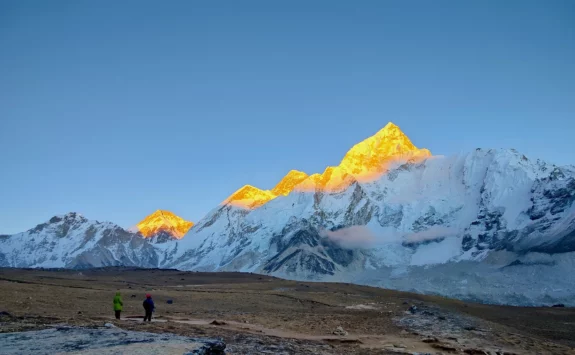Kala Patthar: A Complete Guide to Trek Base Camp of Mount Everest For 2024
Kala Patthar, inside Sagarmatha National Park, is a popular place for adventurers and nature lovers to trek. Kala Patthar is the base camp for Mount Everest, the world’s highest mountain. Climbers and trekkers can have a challenging and rewarding time there.
Kala Patthar is a must-see for any traveler because it has a 360-degree view of the Himalayas, including Mount Everest, which is stunning. In this complete guide to trekking and climbing Kala Patthar, we’ll tell you everything you need to know to plan and organize your trip, including the best time to go, the skills you’ll need, safety precautions, and the different routes and timelines you can take.
Whether a seasoned climber or a first-time trekker, this guide will give you all the information you need to make your trip to Kala Patthar a success.
Unveiling the Hidden Gems of Kala Patthar
“Kala Patthar” is made up of two words: “Kala,” which means “black,” and “Patthar,” which means “rock.” This point of view is a well-known landmark on the south ridge of Pumori, above Gorakshep. Most of the area around Kala Patthar can’t see Everest’s peak because Nuptse is in the way. However, many people go to Kala Patthar to see Mt. Everest up close.
Trekkers can get one of the best views of the Himalayas from the summit. Everest, Nuptse, and Changtse are the most impressive peaks, and you will also see the northern ridges and summits of Lhotse. It will be one of the most beautiful views you’ve seen.
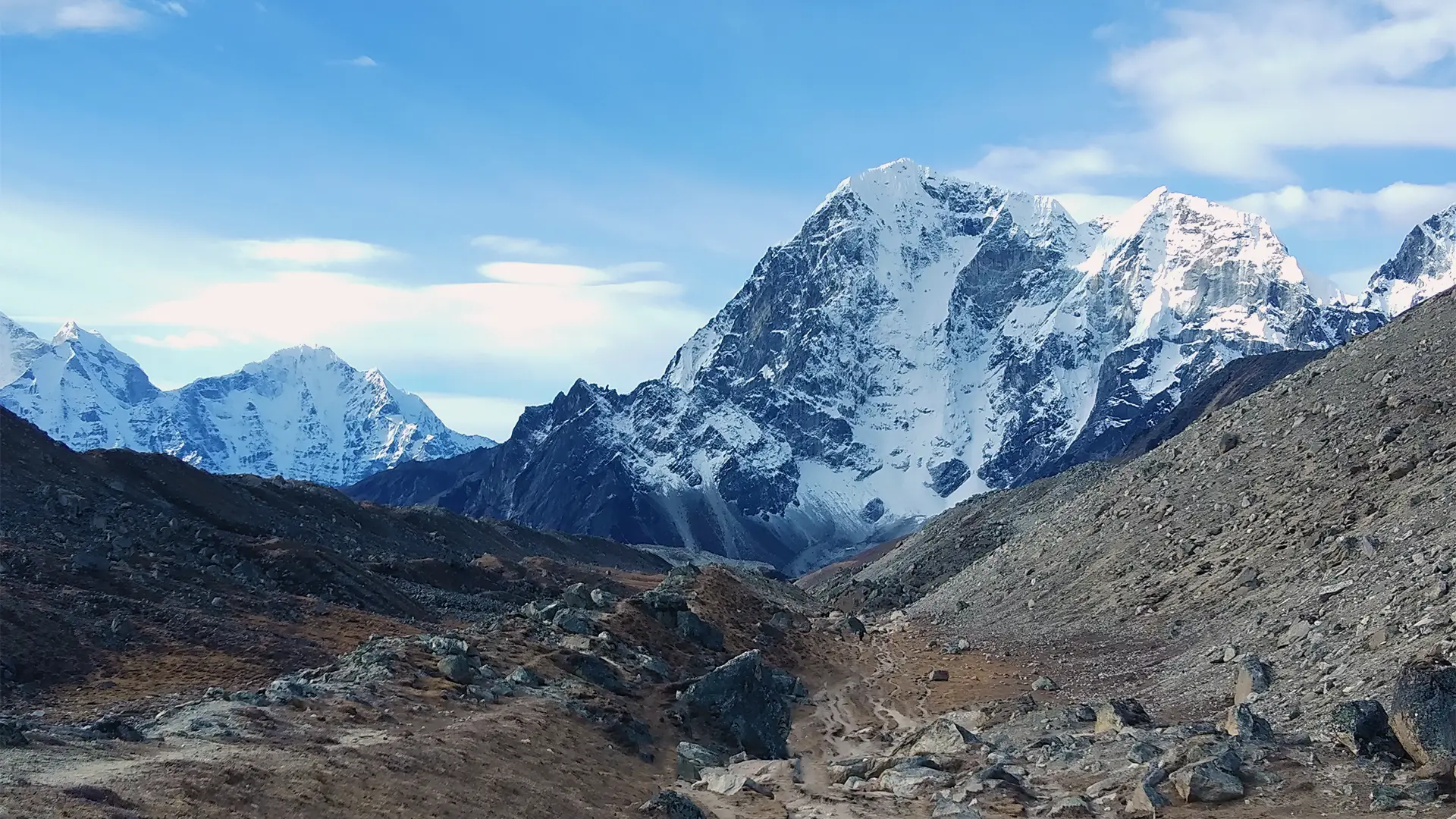
Kala Patthar Elevation Profile
The elevation of the Kala Patthar summit is 5,644.5 m (18,519 ft) above sea level. The trek typically takes several days, with overnight stays at various stops to acclimatize to the altitude.
The trek starts with an adventurous flight to Lukla, at an altitude of 2,860 m (9,380 ft). Ahead, the walk becomes steeper and more challenging, with an ascent to several stops. The trek will become more difficult as you near the summit, with a steep climb.
The ascent to the summit is steep and challenging, but the views from the top are worth the effort. It’s important to note that Kala Patthar is a high-altitude trek, and it is vital to take necessary precautions to avoid altitude sickness and other hazards.
The View of Mountains From Kala Patthar
From Kala Patthar, the view of the mountains is truly breathtaking. From the top, you can see all of the Himalayas, including some of the highest peaks in the world. Mount Everest, the tallest mountain in the world at 8,849 meters, is the most famous mountain you can see from Kala Patthar.
Below is a list of mountains that can be seen from the top of the Kala Patthar.
Above 8,000 meters: Everest and Lhotse.
Above 7,000 meters: Nuptse, Changtse, and Pumori.
Above 6,000 meters: Ama Dablam, Chumbu, Thamserku, Kangtega, Taboche & Lobuche.
Kala Patthar Sunrise and Sunset
Kala Patthar is known for its spectacular sunrise and sunset views, which can be seen from the summit of the peak. At sunrise and sunset, the light shining on the Himalayas in the background makes for a unique and always-changing view.
Kala Patthar is a fantastic place to watch the sunrise. As the sun comes up, it turns the sky a vibrant pink, orange, and crimson. Seeing the first rays of light reach the peaks of the Himalayas from Kala Patthar is a once-in-a-lifetime experience that will leave you feeling thrilled and calm.
It’s worth noting that April to June and September to November have the most explicit and consistent weather, making them the finest months to witness dawn and dusk. Also, the weather and clouds might completely obscure the view from the peak, so it’s smart to check the forecast before making the last push to the top.
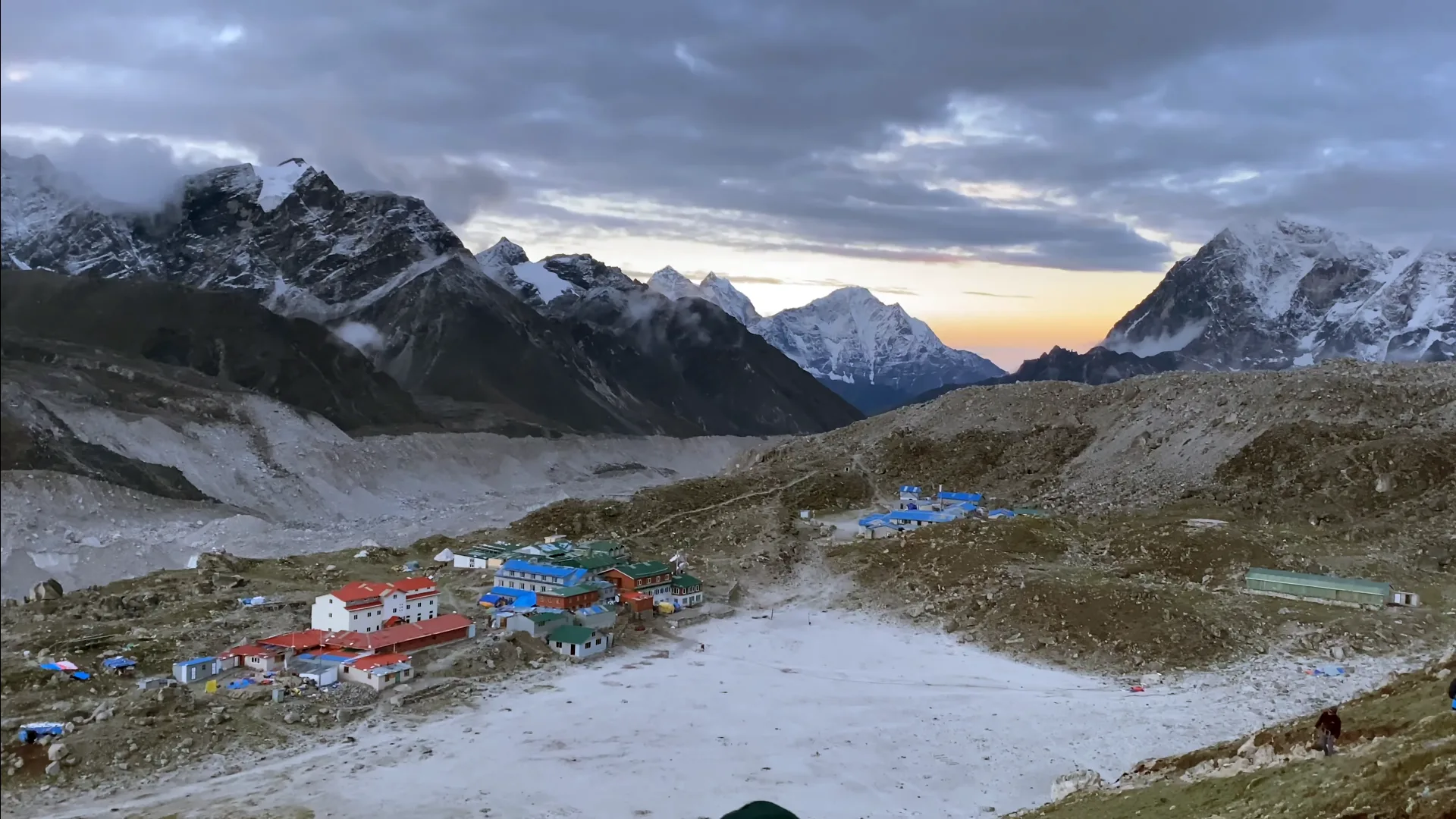
Difficulty Level
The difficulty level of trekking to Kala Patthar can change based on the route, the trekker’s physical condition, and how much they know about trekking. Travelling to Kala Patthar is a moderate-to-challenging trek. There are steep and rugged parts on the way to the top.
The hike starts at a reasonably low altitude, around 3000 meters, and gradually gets higher as you get closer to the top. The trail is very good, but there are some rocky and steep parts, especially on the last climb to the top.
Getting to the top of Kala Patthar is hard on your body. You need to be in good shape and have a lot of physical endurance. Before starting the trek, you should be physically and mentally ready for it.
In conclusion, trekking to Kala Patthar is challenging but rewarding, but it needs to be planned, prepared, and led correctly. A guide is a good idea because they know the trail and the altitude and can help with any problems that might come up.
Duration Of The Trek
The time it takes to hike to Kala Patthar depends on the chosen route and schedule. It will also depend on the trekker’s health and level of experience. Most of the time, the trek takes between 12 and 15 days to finish.
Planning And Preparation For Kala Patthar
For a trek to Kala Patthar to be successful and safe, you need to plan and prepare well. Here are some things you should think about when planning and getting ready for your trek.
Trekking Map
Do you know about the map of the EBC trek? If you click on the infographic image, you will see the route map for EBC. The Everest Base Camp Trek distance is 14 days, starting with the adventurous flight to Lukla. The EBC trek distance from Lukla is about 38.5 miles, i.e., 62 kilometers. Then your trek starts ahead to Phakding, Namche Bazar, Tengboche, Dingboche, Lobuche, and Gorak Shep, and finally to Kala Patthar. On the map, you will also see the extension route in the Everest region. You are using the same path to return to Lukla.
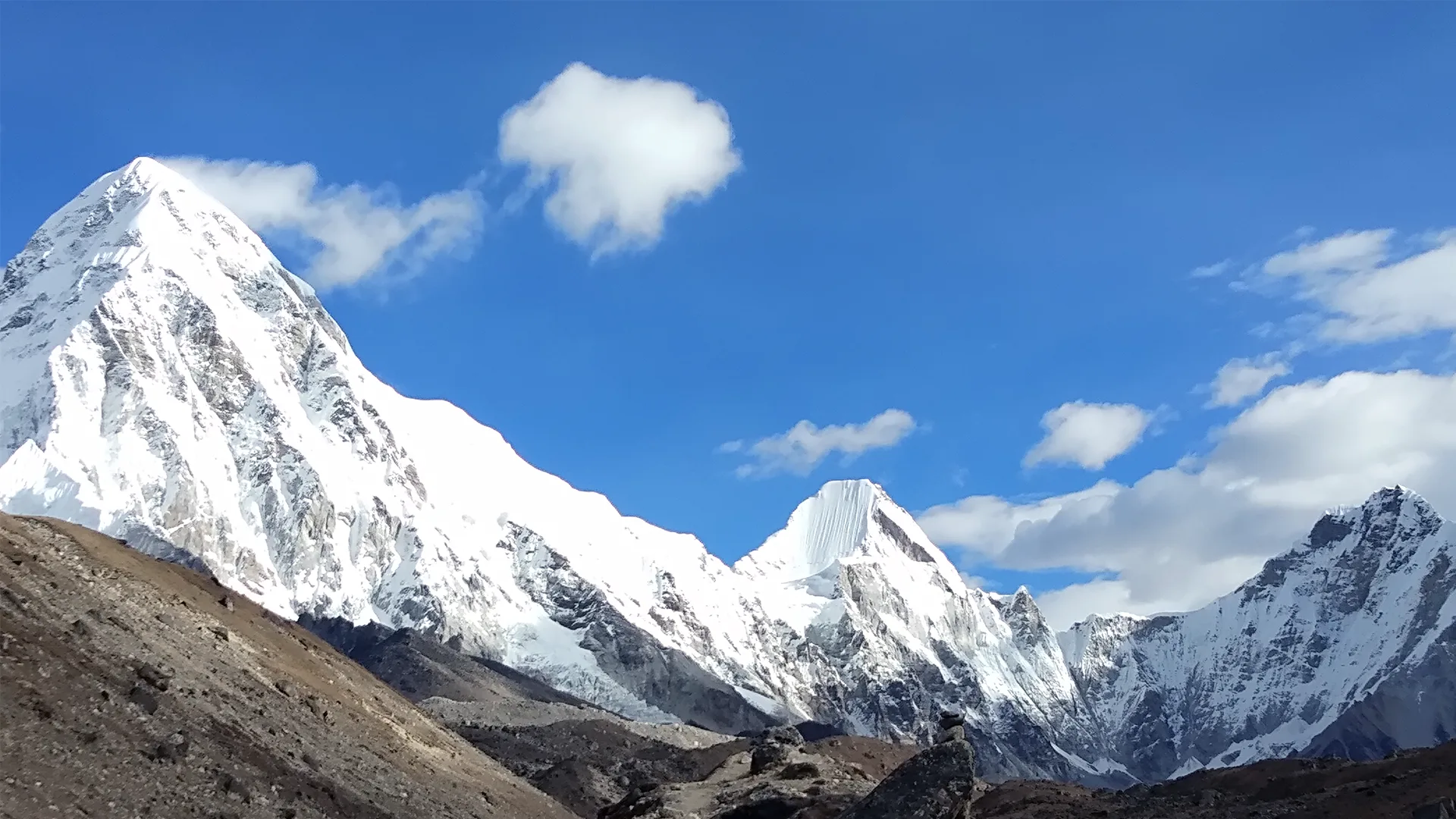
Best Time To Visit Kala Patthar
The best times to visit Kala Patthar are in the spring (April to May) and autumn (September to November), when the weather is pleasant and stable.
In the spring, the weather is warm, and the rhododendrons and other wildflowers are in full bloom, making the trek a colorful and beautiful experience. The days are also getting longer, giving you more time to finish the walk.
Autumn is also a great time to go to Kala Patthar. The weather is still warm, and the sky is clear, so it is easy to see the surrounding peaks. The days are shorter, but the views are still beautiful.
During the winter (December to February), the temperature drops significantly, and the trail can be covered in snow, making the trek more difficult. During the monsoon season (June to August), the trail can be muddy, and visibility can be low because of the heavy rain and clouds.
Required Permits And Fees
The TIMS (Trekkers’ Information Management System) card is the primary permit you need to trek to Kala Patthar. The Nepal Tourism Board gives out this card, which all trekkers require in the Everest area.
The Sagarmatha National Park permit is another permit you need to trek to Kala Patthar. This permit is given out by the Department of National Parks and Wildlife Conservation. All trekkers in the Everest region need to have one.
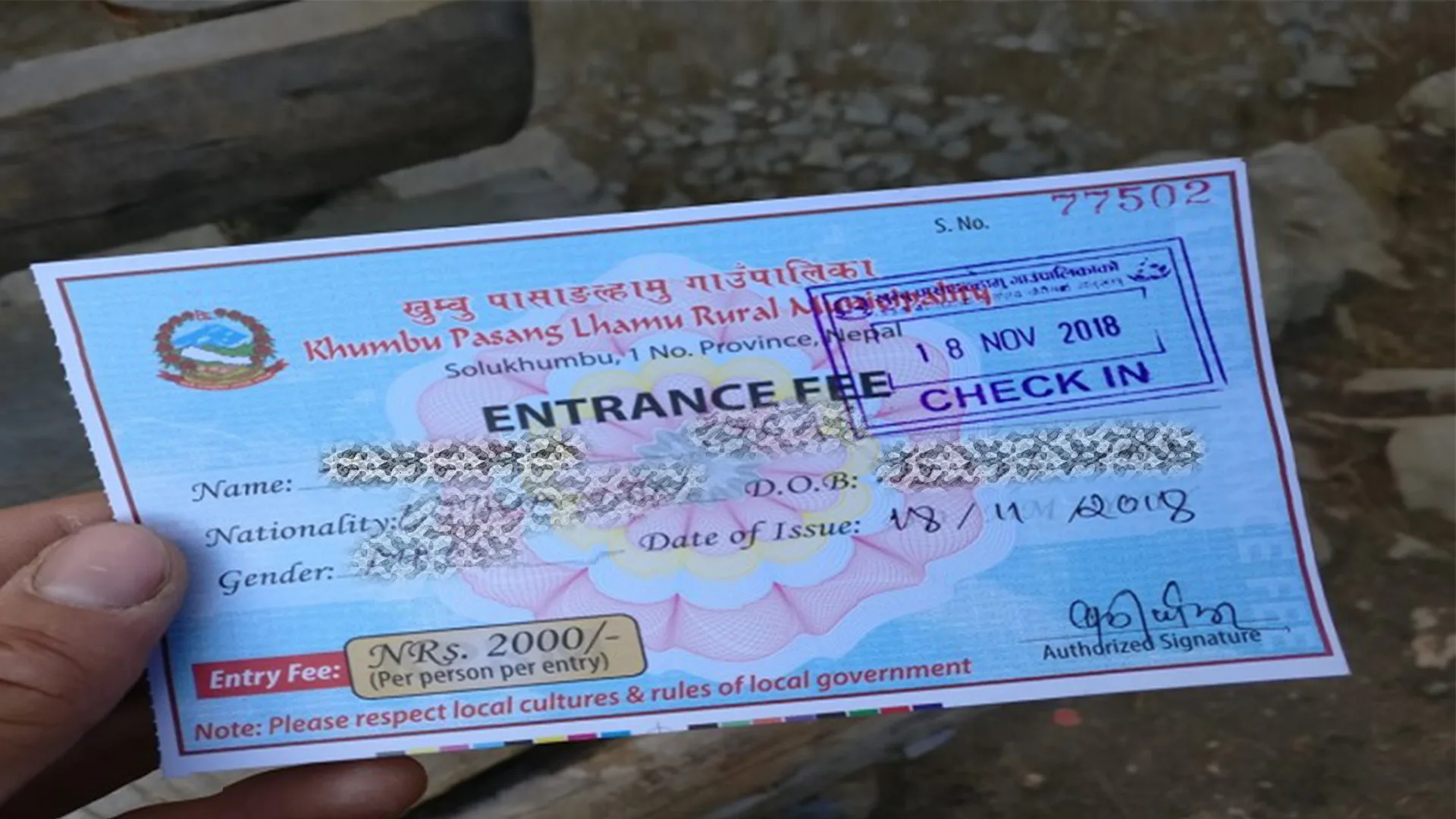
Essential Gear And Equipment
For a safe and comfortable trek to Kala Patthar, you need a certain amount of gear and equipment. Here is a list of essential gear and supplies that you should think about when making plans for the trek:
Hiking boots: A good pair of hiking boots is essential for the trek, as they provide support and stability on the rugged terrain. They should be well-broken-in, waterproof, and provide good ankle support.
Hiking clothes: Clothing should be made of moisture-wicking and quick-drying materials to help regulate body temperature and stay comfortable during the trek. It’s important to bring layers of clothing, as the weather can change rapidly at high altitudes.
Sleeping bag: A sleeping bag is essential for overnight stays in the camps. It should be rated for temperatures of -15°C or lower.
Backpack: A backpack is necessary to carry all your gear and equipment. It should be large enough to hold everything you need but not so large that it becomes cumbersome.
Headlamp: A headlamp is essential for navigating in the dark and for early morning starts.
Water bottles and water purification tablets: It’s essential to stay hydrated during the trek, so bring enough water bottles and water purification tablets to last the entire hike.
First aid kit: A basic first aid kit should include bandages, blister pads, painkillers, and medications for altitude
Physical And Mental Preparation For Kala Patthar
Trekking to Kala Patthar requires a certain level of physical and mental preparation to ensure a safe and successful journey. The following are some tips for preparing for the trek:
Physical preparation:
- Build up cardiovascular fitness through regular exercises such as running, cycling, or swimming.
- Strengthen leg muscles through squats, lunges, and stair climbing.
- Practice hiking or trekking with a loaded backpack to get used to carrying weight on your back
- Acclimatize yourself to the altitude by doing some high-altitude treks before attempting Kala Patthar
Mental preparation:
- Set realistic expectations for the trek and be prepared for the challenges that may arise.
- Learn about the culture and customs of the region you will be visiting.
- Be mentally prepared for the altitude and its effects on your body.
- Be open-minded and flexible, as the trek may not always go as planned
- Stay positive and have a good attitude; it will help you overcome obstacles during the walk.
It’s worth mentioning that it’s also important to listen to your body, and if you feel unwell, it’s better to turn back. In addition, it’s highly recommended to consult a doctor before attempting the trek, especially if you have pre-existing medical conditions.
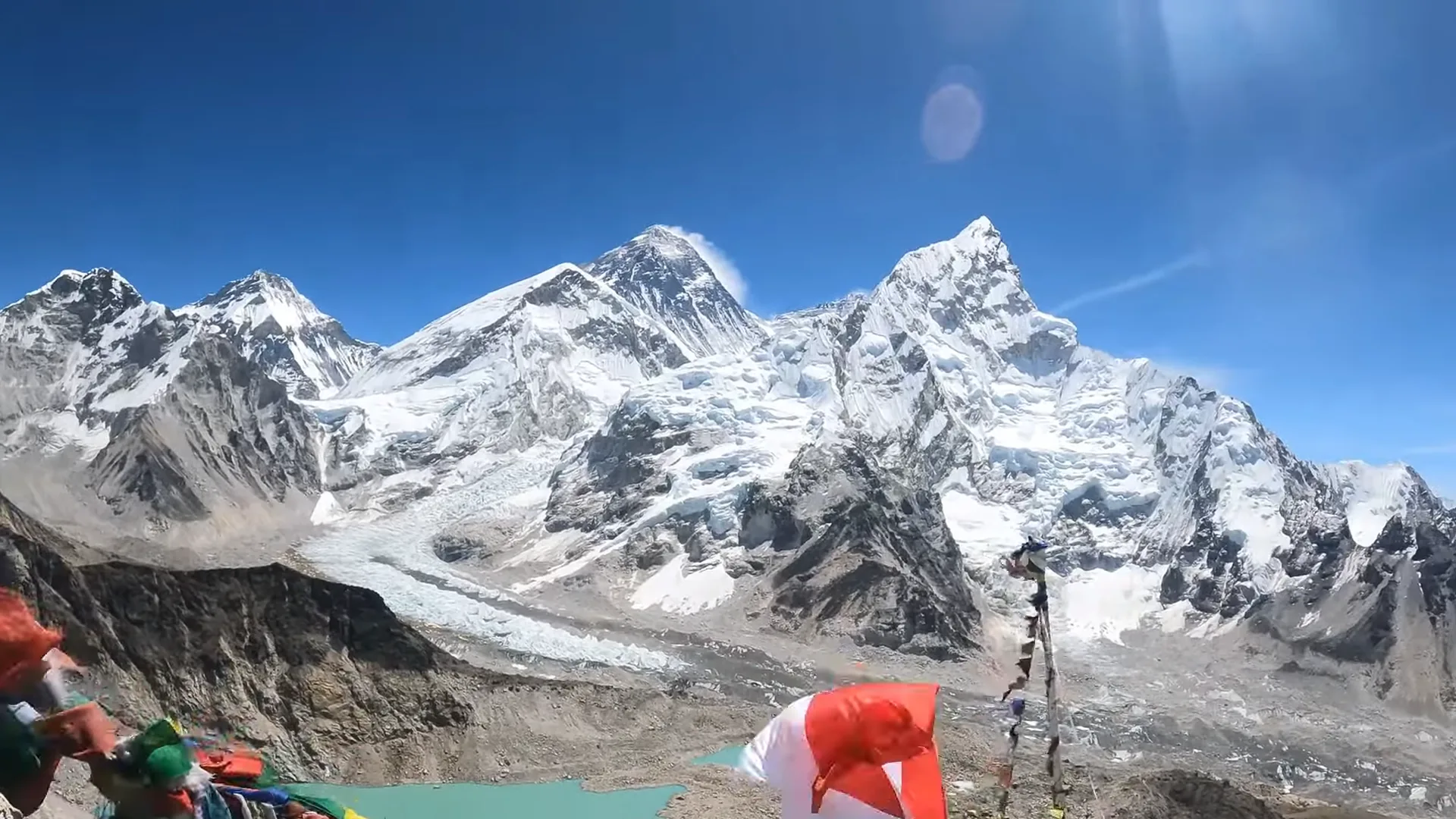
The Trek Itself
The path to Kala Patthar is steep and rocky. It goes up through alpine forests and meadows, past glaciers and streams. The trail is well-marked and often used, but it can be hard to follow because it goes up and down steep hills and is high up.
Accommodation Options
There are no places to stay at the top of the Kala Patthar summit. To get to the teahouse lodge, you have to get to Gorakshep. From there, the walk to Kala Patthar will take about 2 hours.
In Gorakshep, there are only simple rooms with beds. They’ll give you a mattress, a blanket, and a woolen sheet, but you might want to bring your sleeping bag. During busy times, you might have to sleep in the dining room.
Some of the best lodges are:
- Himalayan Lodge
- Everest Inn Hotel
- Buddha Lodge
Tips and Recommendations
- Begin Early
Starting the trek early is a great way to get the best views and avoid crowds. The light in the early morning is also great for taking pictures and taking in beautiful scenery. Also, starting early gives you more time to get used to the high altitude and stop when needed.
- Wear warm cloth
When trekking to Kala Patthar, you must wear warm clothes because the temperature can drop significantly at high elevations. The key is to wear layers so you can easily adjust to changing temperatures and weather conditions.
- Get Physical Map
A physical map gives detailed information about the terrain, such as contour lines, elevation, and landmarks, which can be used to find your way along the trail and avoid getting lost. A physical map can help hikers find possible dangers like steep hills, rocky terrain, and bodies of water. This lets them plan and avoid dangerous situations.
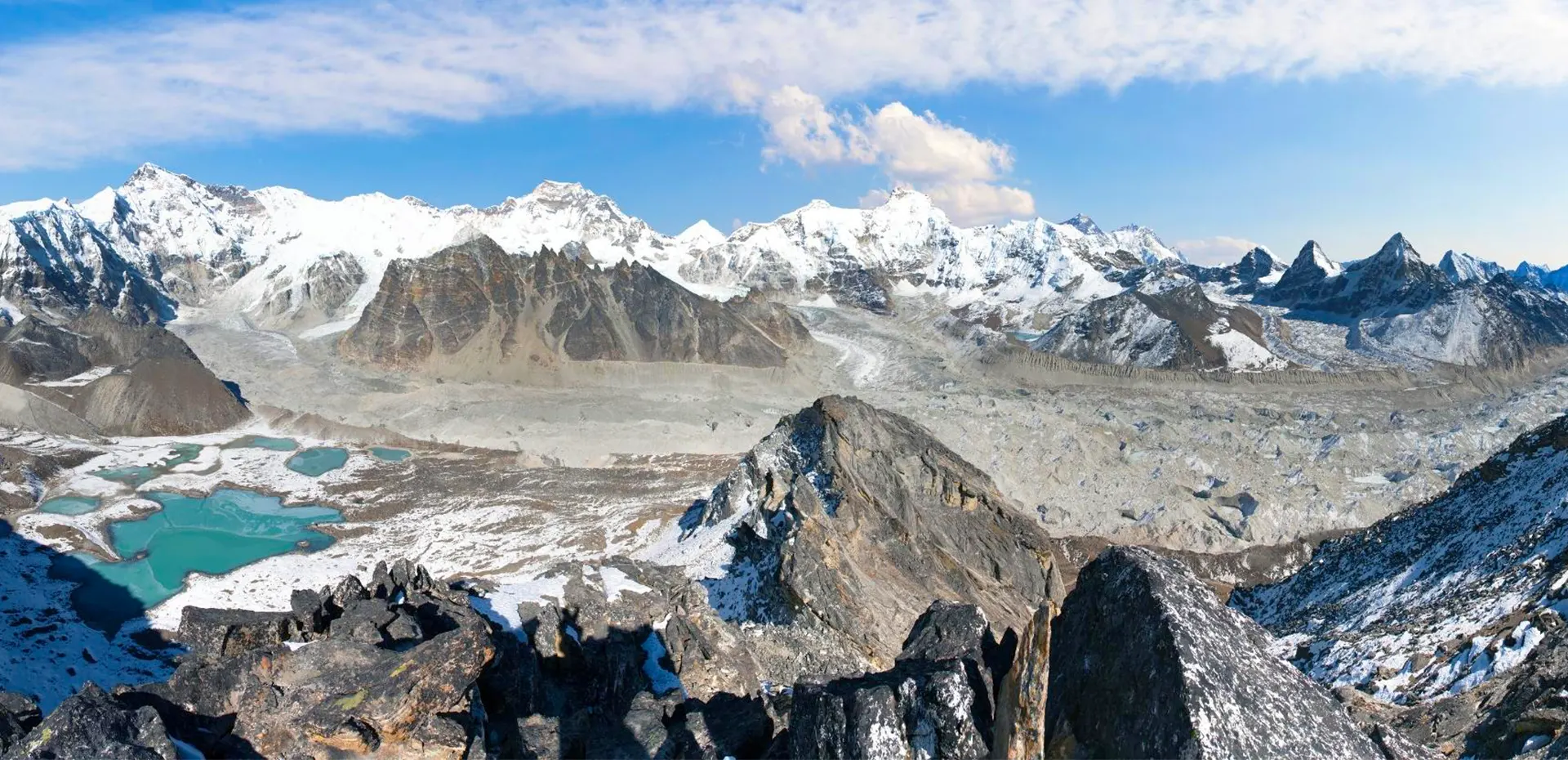
Conclusion
In conclusion, Kala Patthar is a place that anyone who likes adventure or nature must see. At a height of 5,643 meters, it gives a wide view of the Himalayas, including Mount Everest, the highest peak in the world. Climbing Kala Patthar is hard but rewarding, but you need to plan, prepare, and have a guide to do it right.
When the weather is clear and stable, the best time to climb Kala Patthar is between April and June or September and November. For climbers to get into the Sagarmatha National Park, where Kala Patthar is, they have to get a permit and pay a fee. There are different routes and schedules to choose from, depending on how hard and long the trek will be. To avoid altitude sickness, hypothermia, and other risks, safety precautions should be taken.
From the top of Kala Patthar, you can see amazing views of the surrounding mountains, glaciers, and valleys, as well as the sky changing colors at sunrise and sunset. The view from Kala Patthar is amazing and will stay with you forever.
In short, Kala Patthar is a once-in-a-lifetime chance to see the natural beauty of the Himalayas and test your physical and mental limits. It’s a hard but fun adventure that will give you memories to last a lifetime and a sense of accomplishment.
© Copyright 2024 Eco-friendly Treks. Website Developed by: AVIVA


